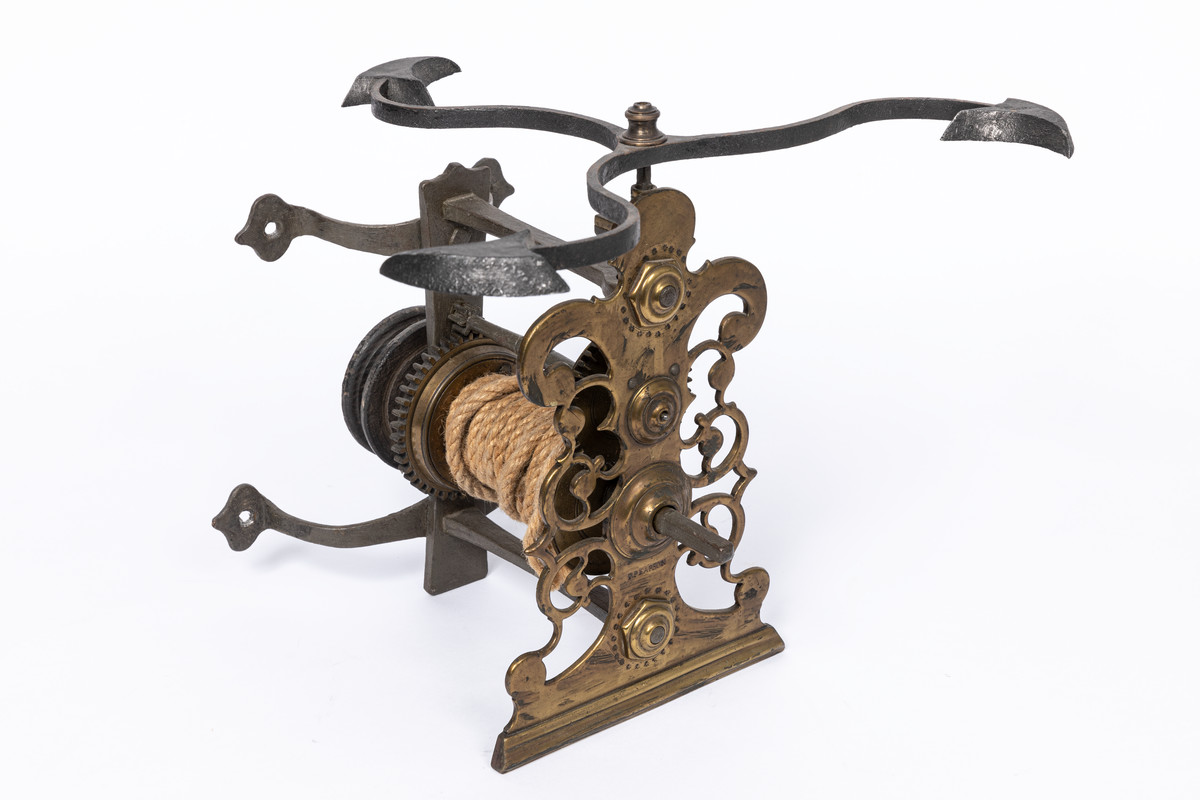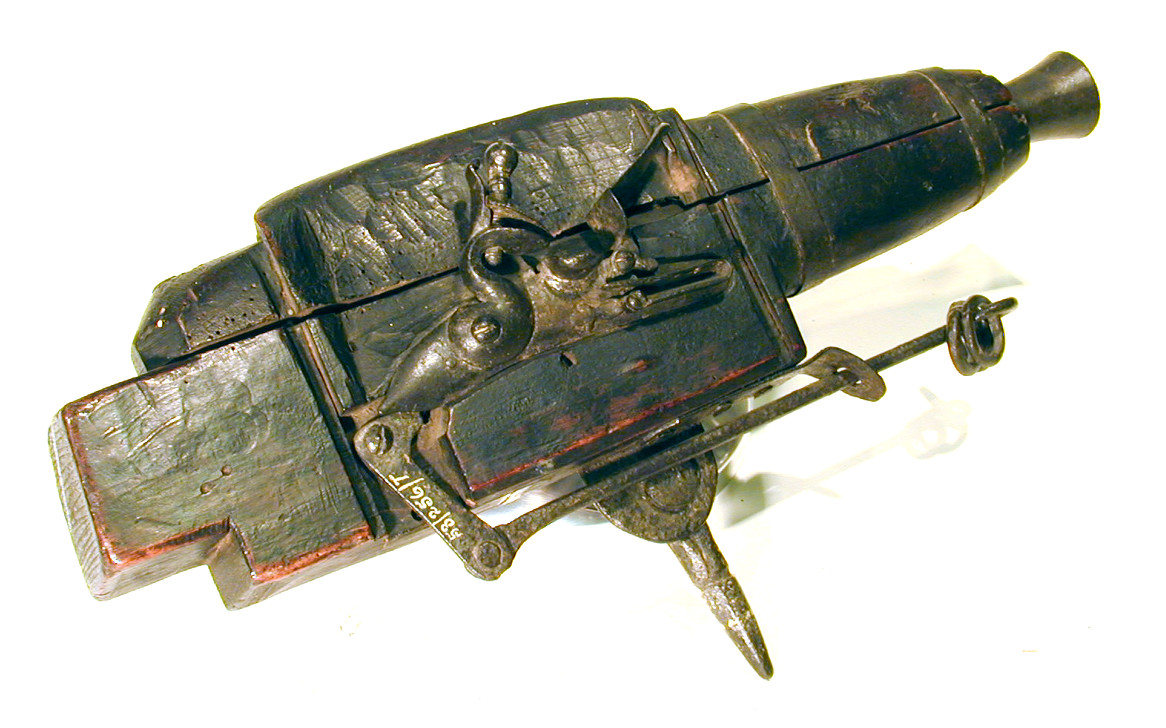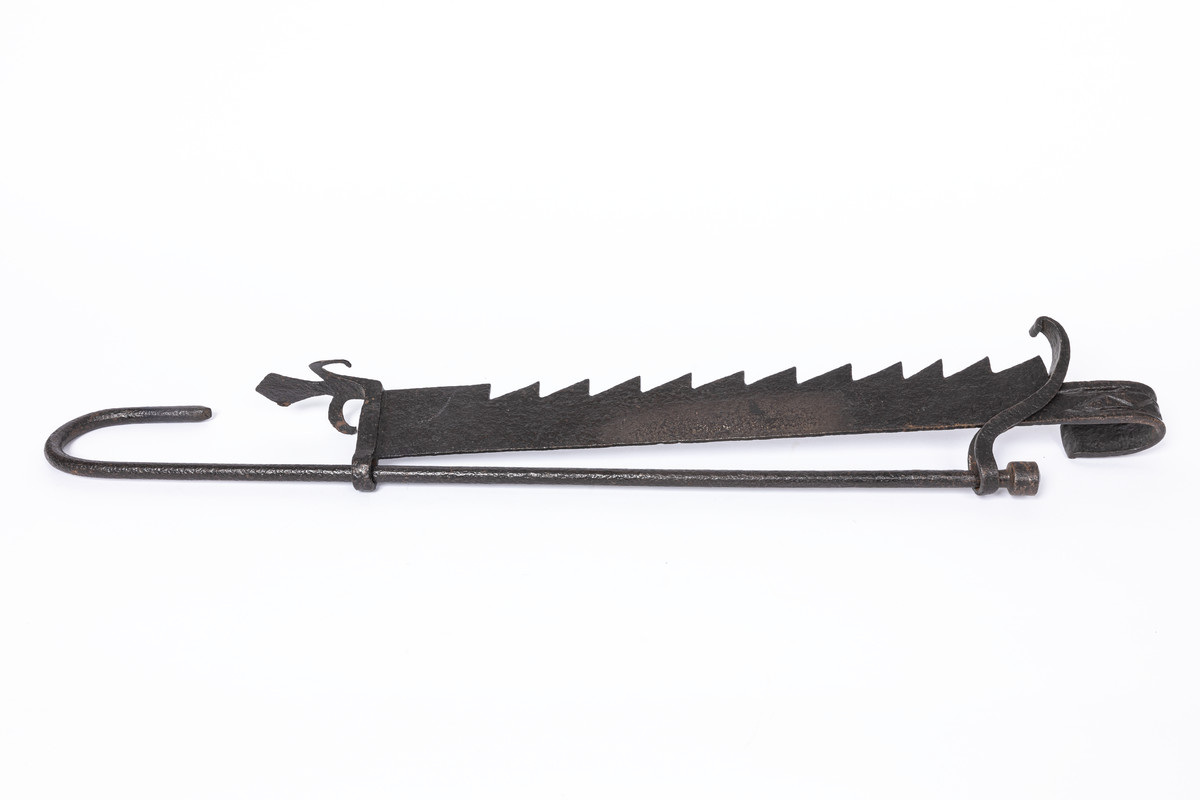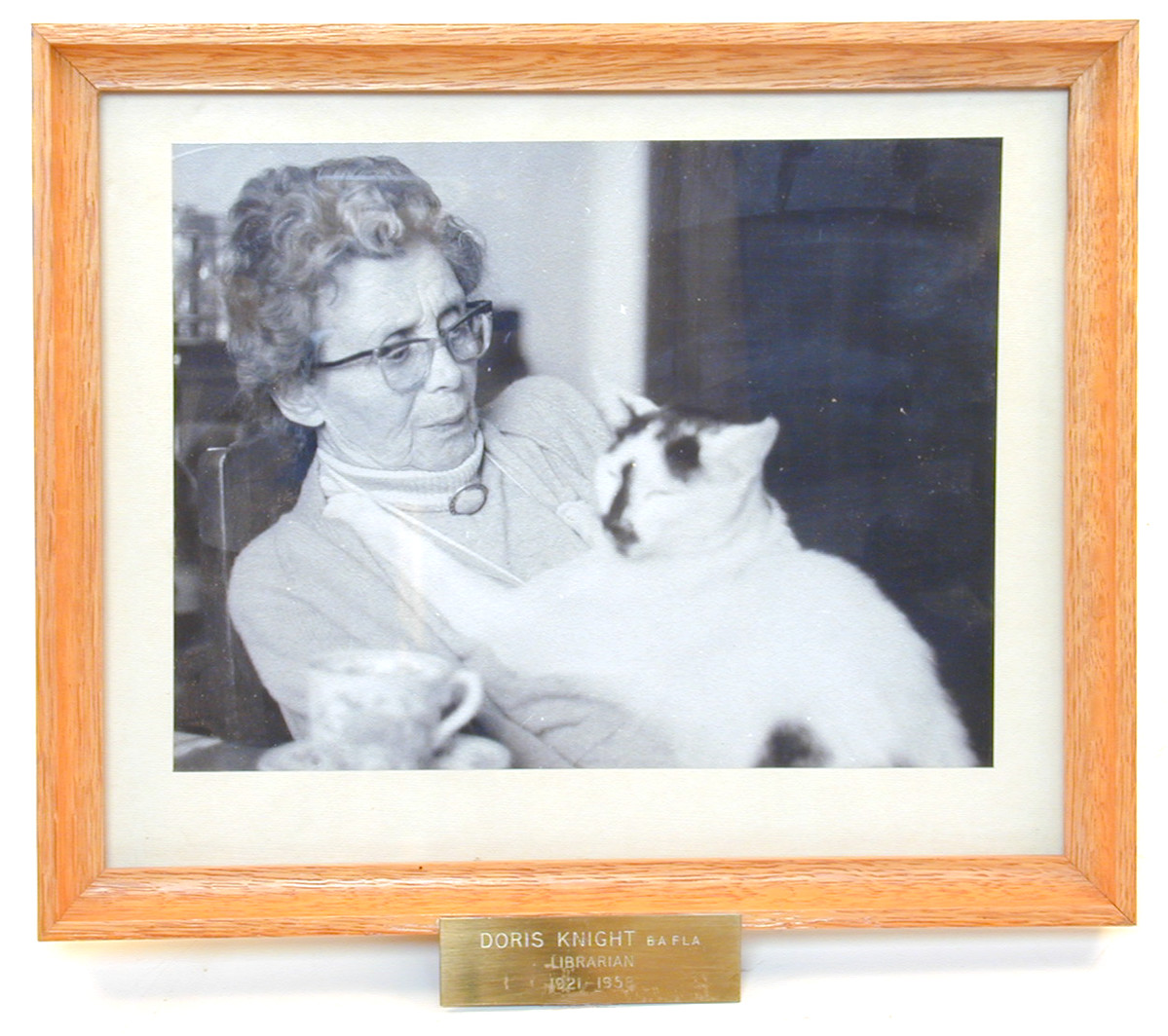Night of the living rural history collection
Join MERL collections researcher Tim Jerrome as he shares four seemingly-villainous objects from our collection, and explores the rural history they actually represent.
31 October update
If you are here from Twitter please note we used the wrong link. Whoopsie. Here’s the right one! But you can and should enjoy this Halloween blog too. Don’t say we don’t spoil you. Please don’t say it. Please!
– social media manager

Insert Spooky Halloween organ music
Earlier this month we shared an image of the spit jack below on our social media feeds. Which, if we’re honest, looks very much like a tiny, evil helicopter.

This is far from the only object in our collection which appears to be more malevolent than it really is. To celebrate Halloween 2021, please join us as we explore several other suitably spooky objects from our collection, and explain what they really are, despite the nefarious purposes their sinister appearances may initially suggest.
Set blasters to ‘poach’
An armoury of futuristic weaponry is essential for any serious villain’s self-esteem. No matter the plot armour of their adversaries, they enthusiastically fire away, usually accompanied by a maniacal cackle. This certainly wouldn’t look out of place in the hands of Boba Fett.

However, this is actually an alarm gun, which was used in a slightly less sci-fi setting. Set up in the woods to deter poachers, it was triggered by a trip wire, and would fire either a blank or a shotgun round into the ground. In 1827, using trapped guns to maim or kill poachers was outlawed. Parliament recognised that although poachers were “mischievous trespassers”, landowners could not take the law into their own hands and become villains themselves.[i] Therefore, this gun would have simply fired a warning shot, alerting gamekeepers to the poacher’s presence.
A villain’s wardrobe
Capes are traditionally sported by superheroes, and while a few do serve a useful purpose, they’re usually adorned for fashion’s sake. Yet some villains take style to another level, dramatically whirling their capes as they turn to retreat after losing the fight to the hero (yet again). But who needs world domination when you look that good?

Admittedly, even Darth Vader may struggle to be scary in this particular woollen cape – but that’s because it has a far more practical use. It was worn by a Victorian family from Basingstoke and is a ‘full’ cape to be wrapped around the body, even having sleeves for convenience. Its Tartan pattern was a favourite of Queen Victoria’s, who had enormous influence over British fashion. For example, she began the tradition of wearing a white dress on your wedding day.[ii] And that’s also something we’d have loved to have seen Darth Vader in.
A trickster’s tool
This object is a Swiss army knife of mischief for any enterprising rural baddie. Need a hook to swipe pies from sills? A blade to sneakily slice your neighbour’s prize-worthy pumpkins? Or a saw to cut the dinner table legs and ruin Christmas? Yes: the ratchet hanger has you covered. Can you think of any more villainous uses for it?

The hanger’s actual application was – believe it or not – cookery. Before gas and electric ovens, food was cooked on stoves in the fireplace. This object would be hung from a chimney beam, with the cooking pot suspended from the other end. The ratchets adjusted the height of the pot and so determined cooking temperature. A lower ratchet was used to boil, and a higher one to simmer.[iii]
‘Ah, I’ve been expecting you…’
Now this one really speaks for itself. A hugely underrated talent on any noteworthy villain’s CV is the ability to keep a cat sitting sedately on their lap throughout any long and smug conversation with the relevant hero. In my experience of cats, them knocking over a glass of water during the villain’s dramatic pause would be far more realistic. And some films even skip the middle-man and portray the cat itself as the villain. Like Stuart Little. Spoilers. Sorry.

In truth, the lady in the photograph was not a villain, but rather a very well-respected librarian. Her name was Doris Knight, and she worked for the National Institute for Research in Dairying (NIRD) between 1921 and 1958. The NIRD was formed by the University of Reading’s Board of Agriculture in 1912, initially as the Research Institute in Dairying (RID), but changed its name in the year of Knight’s arrival to the slightly more favourable NIRD acronym. The institute played a key role in improving milk production at this time, and conducted crucial research into bovine mastitis during the Second World War.[iv]
I did say Doris wasn’t a villain. The jury’s still out on the cat.
In spooky summary
The rural past isn’t always a pleasant place, but as we hope to have shown, it’s not always as bad as it seems. As evil as some as these objects may at first appear, many of them were owned by unsung heroes – farmers and craftspeople who worked tirelessly across the changing seasons for often little reward.
That being said, I personally still like the idea of Darth Vader in a tartan plaid cape. Or a wedding dress. Disney, please: make it happen.
Happy Halloween, everyone!
References
[i] ‘Spring-guns bill’ (March 1827) Accessed via https://api.parliament.uk/historic-hansard/commons/1827/mar/23/spring-guns-bill on 04/10/2021
[ii] Matthews, Mimi, A Victorian Lady’s Guide to Fashion and Beauty (Pen and Sword Books 2018) p. 108
[iii] University of Reading Adlib description, accessed via http://www.reading.ac.uk/adlib/Details/collect/9429 on 05/10/2021
[iv] Woods, Abigail, ‘Science, disease and dairy production in Britain, c.1927 to 1980’ The Agricultural History Review 62:2 (2014) pp. 301
[v]
